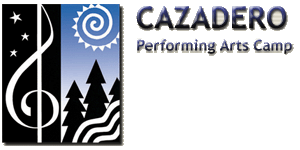
|
Lesson Plan 2: Treasure
Hunt
(Grade Level 5-6-7-8)
First posted April 25, 2004 Last
updated June 19, 2009

Remember these points from the Lesson
Plan Homepage:
(1) These lesson plans are not rigid requirements,
but a starting point for the Nature Counselor's
plan for teaching a particular day's experience.
(2) The activity should be fun and emphasize
active learning on the student's part: ask a
question, don't just state a fact.
(3) You should employ hands-on as much as possible.
(4) Plan each session to also allow time for
making entries in the Nature
Journal. |
Prior to the
session
The purpose of the Treasure Hunt is not just to find things, but to help the students to begin to realize the diversity of the plants and animals in the forest and how they function in the ecosystem of the redwoods. Most peope, even adults, could not tell you much about the diversity of the forest around Cazadero. Once, when I was giving a lecture to the Caz Board of Directors about the natural diversity at Caz, the Executive Director stopped me in mid-lecture and said, "Wait a minute. The plants that you are showing. You mean all these things are here?" She had been a camper, a music instructor, and the ED at Caz for over several decades and had never seen the forest for the trees. The kids are similarly unaware of what is right before their eyes until you show them what they are looking at.
(1) Read the sections on the web site about the Redwood
Forest, tan oak, big leaf maple, red alder, Douglas-fir, California bay, California hazel. The sections on biozones would also be helpful, esp the Riparian Zone and the Oak Woodland Biozone, as they may not be as familiar to you as the Redwood Biozone. You cannot teach what you do not
understand.
(2) Walk around and identify for yourself the various trees, know the locations of some of the ones in the area where you decide to hold the class. Some areas are better than others because a greater variety of trees are present.
Session
Everyone loves a Treasure Hunt, so this one should
be a snap. Decide what you want the students to find.
Some examples are:
(1) Several types of leaves. Decide how many different
leaves you want them to find. What different kinds of
leaves are they? How are they different (redwoods are
gymnosperms, with primitive leaves; others will be angiosperms,
with broad leaves)? How are they the same (all produce
food for the trees from sunlight)? How does the leaf
shape help them to do their job (broad, to catch as
much sunlight as possible).
(2) Several types of lichens. There are two very common
lichens in camp and everyone should be able to find
these. They grow on the redwood branches, so have them
look in leaf litter. This is easiest after there has been a strong breeze, but lichens are available year round on the ground if you know where to look for them.
(3) A feather(s). There are usually many types of feathers
on the ground. Look around the baseball field or around
the bases of trees. Depending on how many you found
on your pre-session search, have them find one or more
feathers. What kinds of birds are in the redwood forest?
What do they eat? Can they find that in the redwood
forest (almost always no)? Are they just passing through
(yes)? Raven and scrub jay are the most common.
(4) Trash. It will surprise them how much is around.
How did it get there? Would you want animals coming
into your home and throwing trash around your room and
your bed? What do you think the animals think about
it? This is a great way to introduce them to some of the essential concepts of ecology.
Don't forget the Nature Journal: have the students
tape their treasures into their books and draw pictures
of what they are finding.
Back to the Lesson
Plan Homepage
|

|

